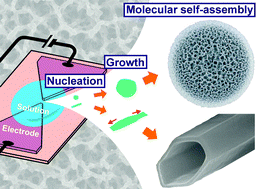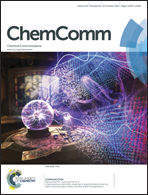A new approach to molecular self-assembly through formation of dipeptide-based unique architectures by artificial supersaturation†
Abstract
Morphological transition and the fabrication of unique architectures through molecular self-assembly of dipeptides are caused by the formation of a small nucleus in artificial supersaturation, achieved by quick drying of the solvent due to the local Joule heating. The growth mechanism of “diatom-like” porous microspheres and microtubes is proposed on the basis of several new techniques developed in the study.


 Please wait while we load your content...
Please wait while we load your content...